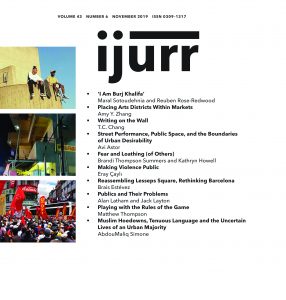This article discusses the great paradox of the planning of public spaces in Barcelona. While for years the city’s residents, politicians and experts have been steeped in democratizing, participatory discourses, the interminable controversies almost all the council’s initiatives in the streets and squares of Barcelona have aroused are evidence of a clear short‐circuit. Somehow this participatory‐democratic consensus has run up against a collective discord which, in my view, indicates the incapacity of the current channels and mechanisms of citizen participation to truly give shape to a more democratic city, one which does not block dissent or stand in the way of the possible. I discuss this short‐circuit through a case study, the Lesseps Square controversy, including a methodological and epistemological debate which, in order to study how the square was reassembled in practice after the participatory remodeling process, puts forward an actor‐network‐theory‐inspired approach to the study of public space. I argue that Barcelona, a city whose public institutions are deeply committed to creating channels for residents to participate in public processes, is at the same time enacting a closure of its public spaces. My contention here is that the urban environment is already distributed (in Rancière’s sense) before it is given over to participation, and that this prevents the emergence of a (more‐than‐human) demos that could redistribute public space by taking account of innumerable unrepresented parties.

